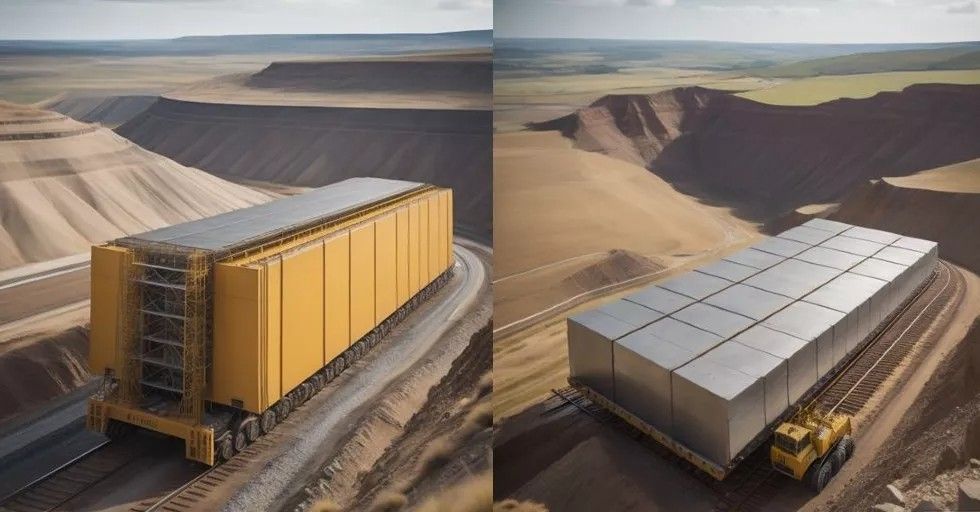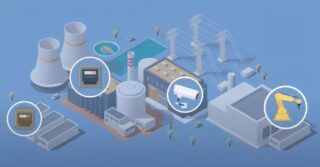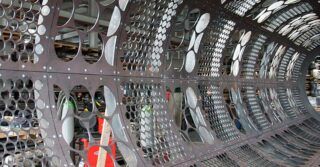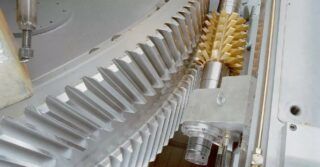The development of renewable energy sources necessitates the need to devise new energy storage methods. What if gravity storage facilities were utilized for this purpose? Such a solution is currently being explored by an international scientific-industrial consortium, led by Wroclaw University of Science and Technology.
The total budget for the project is over 3.5 million euros, with one million euros allocated to research conducted by Wroclaw University of Science and Technology. The project, named “GrEnMine – Gravity Energy Storage in Post-Industrial Areas,” is funded under the European RFCS program – Research Fund for Coal & Steel. It is the first international research project implemented under the Horizon Europe program, with Wroclaw University of Science and Technology as the lead institution. The research team is headed by Prof. Przemysław Moczko from the Faculty of Mechanical Engineering.
As Prof. Przemysław Moczko explains, energy storage is “one of the most significant challenges in energy generation systems, which consist of various technologies. The increasing share of renewable energy, primarily wind or photovoltaic in this case, complicates the stable operation of power systems due to frequent energy shortages or surpluses. For this reason, we observe a dynamic development of various energy storage technologies that will ensure the safe operation of low-emission energy generation and distribution systems. One of these technologies is gravitational storage.”
Gravity energy storage has been gaining increasing interest for several years, becoming the subject of numerous research and pilot projects. This technology relies on harnessing the potential energy of large masses, such as concrete blocks.
One promising solution is a crane system that lifts special blocks to heights of up to 100 meters. During surplus electricity in the grid, the crane uses it to lift blocks, storing energy in the form of potential energy. When the demand for energy increases, the blocks are lowered, and their kinetic energy is used to generate electricity.
The component that converts stored potential energy into electrical current is an assembly of a generator with a frequency converter.
The long operational lifespan of such a device is undoubtedly one of its advantages. It is estimated that such storage facilities can operate reliably for several decades. Furthermore, the high scalability of the solution, the fact that it generates no harmful waste or emissions, and its resilience to failures and extreme weather conditions are factors indicating the future potential of this technology and its key role in energy transformation.
Within the “GrEnMine” project, researchers have proposed two energy storage technologies:
- RM-GES (rail-mounted)
- CB-GES (conveyor-belt)

Illustration: Wroclaw University of Science and Technology
Both will be thoroughly developed during the project’s implementation. A pilot, small-scale energy storage facility will also be established at the Turów Brown Coal Mine, owned by PGE Mining and Conventional Energy SA, to verify and demonstrate the proposed technology.
As Prof. Przemysław Moczko emphasizes:
We also want to determine the potential for energy storage in mining areas and other usable locations in Poland and Europe. Thus, we will create new perspectives and propose innovative ways of developing these regions associated with conventional energy production. This aligns perfectly with the main goals of the RFCS program, which aims to support a just transition
In addition to Wroclaw University of Science and Technology, the scientific-industrial consortium includes AGH University of Science and Technology in Krakow, Four Point sp. z o.o., Lignitorichia Achladas S.A., Oltenia Energy Complex S.A., PGE Mining and Conventional Energy S.A., and Poltegor Institute. The Open-Pit Mining Institute, Technical University of Crete (Greece), University of Petrosani (Romania), and Brown Coal Research Institute (Czech Republic) are also part of the consortium.
The research team at Wroclaw University of Science and Technology includes Dr. hab. Eng. Damian Pietrusiak, Prof. Associate, Dr. hab. Eng. Jerzy Czmochowski, Prof. Associate, Dr. hab. Eng. Marcin Kowalczyk, Prof. Associate, Dr. Eng. Piotr Odyjas, Dr. Eng. Jędrzej Więckowski, MSc. Eng. Jakub Andruszko, MSc. Eng. Tomasz Dobosz, and MSc. Eng. Maciej Olejnik.




![Methane emissions remains elusive challenge for oil and gas industry [REPORT] Methane emissions remains elusive challenge for oil and gas industry [REPORT]](https://industryinsider.eu/wp-content/uploads/xMethane-emissions-by-source-320x167.jpg.pagespeed.ic.q-7jG2luXb.jpg)


